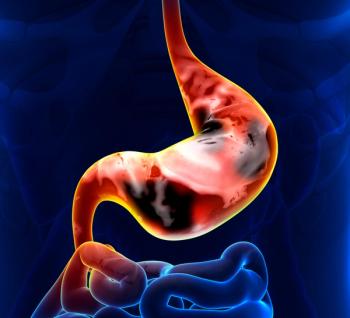
Commentary on Abstracts #2130 and #2257
Neovascularization has been shown to be a critical step in the progression of metastatic disease. Most tumors in humans do not grow beyond 2 to 3 mm³ without neovascularization. Angiogenesis increases tumor growth via perfusion and paracrine
Neovascularization has been shown to be a critical step in the progression of metastatic disease. Most tumors in humans do not grow beyond 2 to 3 mm³ without neovascularization. Angiogenesis increases tumor growth via perfusion and paracrine production of growth factors by endothelial cells or their release by macrophage and other host cells (Nature Med 1:27-31, 1995). Targeting the endothelial compartment of a tumor may induce a harmless state of dormancy without toxicity or drug resistance and, in combination with cytotoxic therapies, may potentiate shrinkage of tumors and maintain them in a dormant state. Since antiangiogenic drugs work on the endothelial cells and not on the tumor cells per se, they could potentially be active against chemotherapy-resistant tumor cells (Nature Med 2:689-692, 1996).
Thalidomide in Combination Therapy
In tumor-bearing animals, the combination of antiangiogenic and cytotoxic therapy can be curative, whereas either agent alone is only inhibitory (Int J Cancer 57:920-925, 1994). These data suggest that the therapy directed against both the endothelial- and tumor-cell components of a tumor is more effective than therapy only against tumor cells. Abstracts #2130 and #2257 are preliminary reports of clinical trials using the combination of standard chemotherapy with thalidomide (Thalomid) in advanced non–small-cell lung cancer and metastatic melanoma, respectively.
Merchant et al (abstract #2130) conducted a pilot study to assess the safety of the combination of thalidomide with carboplatin (Paraplatin) and paclitaxel (Taxol) in the treatment of patients with unresectable stage III and IV non–small-cell lung cancer. Thalidomide was escalated from 200 mg/d to the target dose of 1,000 mg/d. To date, only nine patients have been treated. Although no responses have been seen, eight patients have stable disease, and only one patient has had disease progression. The most frequent side effects noted were fatigue, myalgia, constipation, and neuropathy. These preliminary results suggest that thalidomide is safe and well tolerated when combined with carboplatin and paclitaxel. Although additional follow-up is needed, the preliminary data did not demonstrate synergistic antitumor activity when thalidomide is combined with the cytotoxic therapy.
The oral agent temozolomide (Temodar) is an effective alternative to dacarbazine (DTIC-Dome) for patients with metastatic melanoma. Clinical studies have demonstrated that temozolomide penetrates the blood-brain barrier, and temozolomide-treated patients had twofold higher exposure to the active metabolite MTIC than dacarbazine-treated patients. Hence, temozolomide may offer better control of systemic disease and the benefit of treating subclinical and clinical central nervous system metastases. Arance et al (abstract #2257) reported the preliminary results of an ongoing three-arm phase II study aiming to assess the efficacy of temozolomide in an 8-hourly schedule against the 24-hour schedule in combination with either interferon alfa or thalidomide. This study is designed to enhance the antitumor activity of temozolomide by (1) altering the administration schedule to deplete the protein O6-alkylguanine-DNA alkyltransferase, a major determinant of resistance to temozolomide; (2) combining it with interferon alfa, a biologic response modifier with antitumor activity as monotherapy; and (3) combining it with the antiangiogenic agent, thalidomide. Thalidomide is administered at a fixed dose of 100 mg/d. The preliminary data showed the treatment in all arms are well tolerated, and no significant differences in toxicity or efficacy were identified at this early stage.
In summary, thalidomide has a broad spectrum of activity in many malignancies; it is available in a well-tolerated oral form; it has predictable side effects that are managed easily; and it may have additive or synergistic effects when given with other chemotherapeutic agents with nonoverlapping toxicity profiles. An issue of major interest in clinical trials and general practice is the biological optimal dose of thalidomide to be used, especially when it is combined with cytotoxic agents.
Newsletter
Stay up to date on recent advances in the multidisciplinary approach to cancer.






























































































